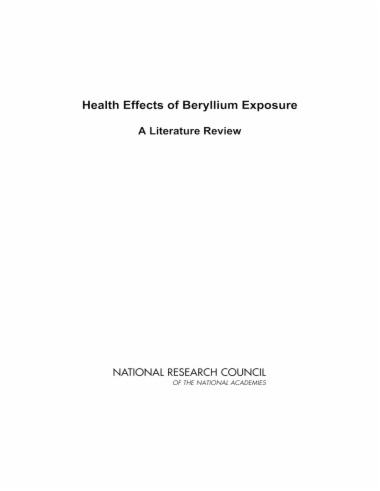

Beryllium is an important metal that is used in a number of industries—including the defense, aerospace, automotive, medical, and electronics industries—because of its exceptional strength, stability, and heat-absorbing capability. It is found in a variety of technologies, including nuclear devices, satellite systems, missile systems, radar systems, bushings and bearings in aircraft and heavy machinery, x-ray machines used for mammography, cellular telephone components, computer components, and connectors for fiber optics. To help determine the steps necessary to protect its workforce from the adverse effects of exposure to beryllium used in military aerospace applications, the U.S. Air Force requested that the National Research Council's Committee on Toxicology (COT) conduct an independent evaluation of the scientific literature on beryllium, provide risk estimates for cancer and noncancer health end points, and make recommendations about specific tests for surveillance and biomonitoring of workers.
The request specified that two reports be produced to accomplish those tasks. The first is to provide a review of the scientific literature on beryllium, and the second will expand more critically on the review in considering the maximum chronic inhalation exposure levels that are unlikely to produce adverse health effects, in estimating carcinogenic risks, and in providing guidance on testing methods for surveillance and monitoring of worker populations and other specific issues detailed in the statement of task. In response to the U.S. Air Force request, COT convened the Committee on Beryllium Alloy Exposures, which prepared this first report. Health Effects of Beryllium Exposure : A Literature Review identifies the available toxicologic, epidemiologic, and other literature on beryllium that is most relevant for addressing the statement of task, focusing primarily on beryllium sensitization, CBD, and cancer.